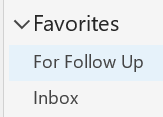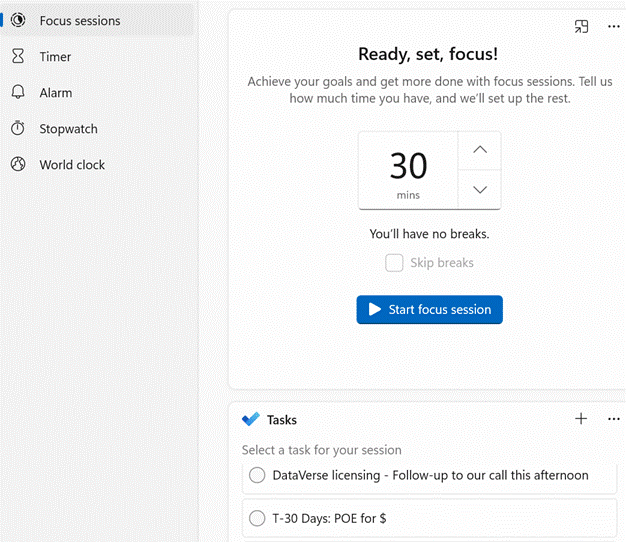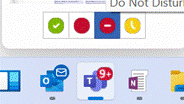 There are a variety of ways to zoom into content on your PC, maybe so you can read the tiny text or perhaps look for details in an image. If you have a physical mouse, then it will almost certainly have a scroll wheel or a touch-sensitive scroll-pad which is used to speed through all those LinkedIn posts that clutter up your feed of the good stuff. If you also hold the CTRL key down while moving the scroll-thing up and down, then the Office doc or web page you’re looking at will zoom in and out as well. Pressing CTRL-0 in the browser will quickly reset your view back to 100%, in case you’ve scrolled off the edge of the world. There are a variety of ways to zoom into content on your PC, maybe so you can read the tiny text or perhaps look for details in an image. If you have a physical mouse, then it will almost certainly have a scroll wheel or a touch-sensitive scroll-pad which is used to speed through all those LinkedIn posts that clutter up your feed of the good stuff. If you also hold the CTRL key down while moving the scroll-thing up and down, then the Office doc or web page you’re looking at will zoom in and out as well. Pressing CTRL-0 in the browser will quickly reset your view back to 100%, in case you’ve scrolled off the edge of the world.
If you’re using a trackpad rather than a rodent, or have a proper touch-screen, pinching with thumb and forefinger might well do the same thing, though exactly how will be determined by your machine’s settings. Annoyingly, some websites (like eBay, many estate agents, photo galleries etc) have a habit of not zooming into the image when you make the browser try to scale the page up; they might even make the menus and surrounding text massive, while keeping the image the same size.
A simple way to over-ride the issue might be to right-click on the image and choose to Some sites (like image libraries or photographers’ websites) won’t let you right-click on an image to save it or do anything. But there is another way… If you care to delve into the Developer Tools section in Edge (or Chrome) then you’ll get a frankly bewildering array of tools that let you peek into how the content of the page is set out and even how the site is performing over the network. Of particular interest here, though, is to be found under the Elements tab – this shows a hierarchical representation of the code behind the page, with sections that can be expanded and collapsed by a little arrow to the left of each. [Browsers other than Edge or Chrome may behave differently and call it something else – if you’re weird enough to still use Firefox, it’s Inspector vs Elements]. Normally, you’d be looking somewhere in the body section, and when you hover your mouse over an element, it will highlight that section on the page so you know you’re dealing with the right one. You’ll probably need to drill in to quite a number of <div> or <table> tags to find the one you want, though if you right-click on a part of the page and choose Inspect, it might jump straight to that particular clause . Try it on a fairly simple website and you’ll get the gist quickly. If you find an image file listed in the site coding, hover that section and you should see the properties of the image (depending on how it’s encoded); click the Current source URL and it will launch that image in its own tab. Press 12 again to close Developer Tools and return to normal browsing. |
Month: January 2022
614 – Good Game, good game!
|
“Wordle” became a synonym (or even an anthimeria) for a “word (or tag) cloud” from Other Wordle sites still exist. In late 2021, another Wordle appeared – a play on the name of its creator (Josh Wardle), a simple word game which has taken the internet by storm. It deliberately only had one round per day (so as to not rob the player’s attention like many other games do), and aims to be free to play and commendably ad-less. If you’d prefer to have your attention stolen so you can repeatedly play the game, try clone Wheeldle instead. Of course, many other word games are available as apps and sites – like Wordle, the word-search mobile app which has been around for years, along with a load of clones of the viral 6-line Wordle web app; they may not be free and may not be free of ads. Apple has already weilded the ban hammer to several Wordle rip-offs. If you’ve not been much of a word puzzle gamer previously but you’ve taken to Wordle, try out Wordament – a venerable app available on mobile devices and Windows PCs alike. It’s also available online. However you play it, you will need to put up with some ads on the way. Or just wait until the following day so you can tell Twitter how your Wordle quest went. Aaerm… |
613 – Ready for your close-up?
|
Outlook made some helpful suggestions in response – just one example of new AI functionality showing up by dint of subscription services.
Mirroring your video makes it easier to interact with your own environment while you’re looking at the screen, though it doesn’t affect what others in the meeting see. Lighting Correction is a one-setting tweak for fixing the contrast and brightness, which can be handy when it’s dark outside and your room lighting isn’t ideal.
Check out the Teams blog, and look forward to lots more new features arriving later in the year. Another tweak in managing your own video comes from users’ feedback, where they don’t want to see their own video window, thinking that it’s distracting when looking at a gallery of other attendees in a meeting.
Perfect for checking out how the facial buffing has worked out. |
612 – New Year, New You (someday/maybe)
|
If we can’t reduce volume of professional communications (be that emails, Teams messages, whatever – just look at Steve cleaning his mailbox and removing >100,000 Sent Items from a single year), then maybe we could do a better job of managing the stuff that we have to deal with. Much ink has been spilled on how to be more effective and how to get things done, but one useful time/focus management principle to revisit is sometimes known as Eisenhower’s Matrix, of which a variety of depictions exist:
The premise is that any task has separate degrees of importance and urgency; we tend to prioritize urgent and overdue things versus things that are actually important. Discipline in task management can give us the clarity to not worry about seemingly urgent yet non-important tasks, and to stay focussed on things which are important, regardless of their urgency. Carve out 75 minutes if you can – because this stuff is important – to watch Randy Pausch’s lecture on Time Management, with the context that when it was recorded, he knew he only had weeks left to live: talk about prioritizing important vs urgent. How you put time and focus management into practice will differ depending on your own style and what tools you want to use. For the Windows / Microsoft 365 user, there are a few quick wins to consider:
|

 open it in a new tab, thus freeing the graphic from the strictures of the page it’s on and allowing you to zoom in as you please. In some cases, the image you see here will be higher in resolution than the one which was on the page, due to the aforesaid scaling (especially true on eBay images, where often the source is many times larger than the view eBay presents). Even simpler, you may find that clicking on the image on a web page will open the full-size version of it, and that will allow you to zoom in even further.
open it in a new tab, thus freeing the graphic from the strictures of the page it’s on and allowing you to zoom in as you please. In some cases, the image you see here will be higher in resolution than the one which was on the page, due to the aforesaid scaling (especially true on eBay images, where often the source is many times larger than the view eBay presents). Even simpler, you may find that clicking on the image on a web page will open the full-size version of it, and that will allow you to zoom in even further.
















